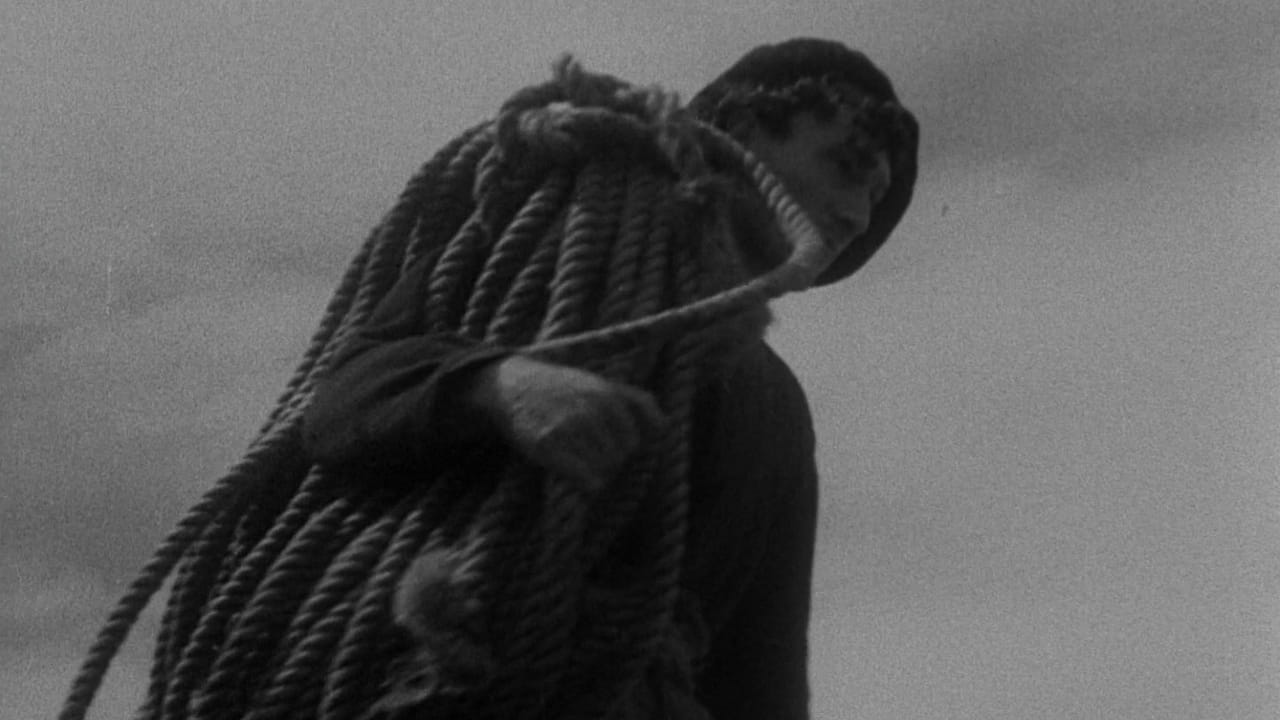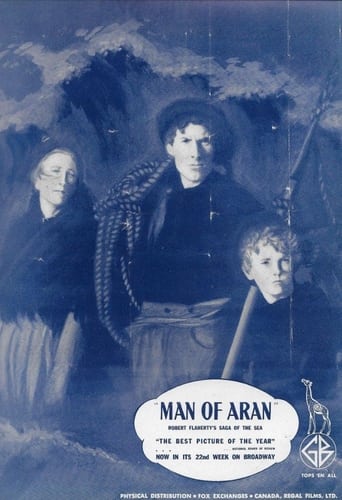

I'm afraid this is one of the cases when I went to a good deal of physical effort, not to mention discomfort, to get to see a film, and then had my expectations severely dashed. What I find hard to grasp about this film is just how anyone could take such dramatic footage and create such a sadly tedious result out of it...In many ways this is a silent film, but as a silent it is ill-served by its (too sparse) intertitles and its (apparently especially composed) music, which is used in talkie-fashion as a bland wash of sound behind the images, rather than responding in any way to what is on screen. The visuals ought to be full of tension, and I felt that the homogeneous deployment of the music actually undermined what tension was there.Which was not much. The impression I got was that the director was trying to put in *every* frame that he had shot on location, with the result that everything happens with extreme longueurs. Unfortunately very little of what we are seeing is explained, which doesn't help. Eventually it is usually possible to work out what is happening, but the approach is neither conducive to the interest of a documentary nor to the coherence of a narrative film.Considered as a talkie, on the other hand, the film makes poor use of dialogue -- which is, in practice, largely incomprehensible, and unhelpful when the characters' words can be made out (it's clear why intertitles were felt to be necessary). I wasn't clear whether the characters are in fact speaking Gaelic most of the time, as I had originally assumed, or whether the recording quality is just so poor as to make it hard to understand their accented English.So far as narrative goes, practically nothing actually seems to happen. I'm afraid I actually fell asleep in the middle of the film (at some point after the interminable shots of the curragh hooking a basking shark in real-time were followed, alas, by an intertitle stating that the action was going to continue for a further two days..!), but worryingly didn't appear to have missed anything when I woke: the woman and boy were still gazing out from the cliffs, the boat was still out on the waves, and the only thing that had changed was the weather. Basically, the curragh arrives at the start of the film, there are some shots of soil gathering and starting the cultivation of a new field (this was the most interesting and 'documentary' section of the whole picture, where we were actually given enough information to learn something!), and then the curragh and its crew set out again after a (quite harmless) basking shark, which is almost as large as the boat. A storm. The boat is smashed after the crew abandon it on the stony beach -- I'm afraid I chiefly hoped the film-makers paid for the loss -- The End.The rest is all endlessly arty shots of the waves smashing against the cliffs on Aran. Very little shown of the everyday life of the inhabitants; no explanation of the fascinating history and unique handling qualities of the curraghs (the last descendants, as it happens, of the Irish leather-skinned craft of the Middle Ages); not enough human interest to arouse more than an abstract concern over the fate of the little family. The footage is spectacular, and oh! what a film the BBC documentary section might have made out of it -- what an incestuous thriller the silent-era Hitchcock might have concocted around that scenery and those lives...Flaherty contrives the astonishing feat of making it both remarkably boring and oddly uninformative.
... View MoreThis is beautifully filmed with some real highlights. The seas off the Aran Islands on the west coast of Ireland can be awesomely stormy and you will probably never see more impressive footage of such as in this film. There is a fantastic sequence of a two-day battle to catch a Basking Shark and the final scenes of three fishermen in a currach on the stormy sea trying to make it to shore are hair-raising. The many shots of spectacular cloud formations over slivers of land are enough to make an Ansel Adams envious.The theme of man fighting the elements in a harsh environment just to survive is hit pretty hard. The family depicted is indeed living a primitive existence. They carry seaweed in baskets on their backs up steep cliffs to compost for soil to plant their potatoes; they patch their canvas-hulled currachs with rags and tar; they spear sharks for meat and oil.By watching the extras on the DVD you learn that "Man of Aran" is actually a historical reenactment of what things might have been like in a bygone era - and a highly romanticized reenactment at that. By the time "Man of Aran" was made, 1934, the people on the Aran Islands had not hunted sharks for decades; the seaweed was carried on mules; there were well-to-do islanders who owned large acreages of fertile soil; cattle were sent to market by forcing them to swim to ships anchored hundreds of yards off shore. And director Flaherty processed all of his film on the island, so things could not have been all that primitive. I can think that this movie influenced subsequent work. In "The Field," a key plot element is having Richard Harris do back-breaking seaweed hauls up steep cliffs, and Bergman's famous black figures silhouetted against the sky in "The Seventh Seal" are derivative of similar images in "Man of Aran."I felt duped by this being called a documentary, but, be that as it may, I found "Man of Aran" well worth watching for what it is.
... View MoreI watched this film in my documentary film class and was bored to tears. This film is supposedly a documentary, but most of it looked staged, which is Flaherty's style. Watching people search for soil in the cracks between rocks with very little dialogue is not the most exciting thing to see on the screen, however the time frame needs to be taken into account. This was probably some exciting stuff back in the 1930s. The big dramatic man versus nature scene at the end was snooze worthy. It was, perhaps, the most boring thing I have ever sat through. Nanook of the North was a better made film of Flaherty's, however that is not a true 'documentary' either.
... View MoreA magic film that you can watch again and again for its majesty and drama. I cannot recall another black and white movie that so well captured the terrifying grandeur of the sea. If you saw and enjoyed "Ryan's Daughter", do see this classic of cinema and compare it's storm sequence. What magic Flaherty captured in astonishing cinematography and editing! The setting is wonderful, so do see this film, and hope you too get the opportunity to see the West coast of Ireland when the sea is up and the wind is shrieking. Times may have changed even these more remote parts of Ireland, but nothing will ever overcome the stark and rugged beauty of this glorious landscape so ably captured in "Man of Aran".
... View More